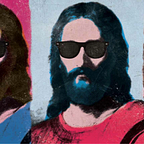When Angels Fall
Victoria’s Secret’s Angels are ‘heaven’ on earth
Victoria’s Secret is the most successful American retailer of lingerie. American businessman Roy Raymond founded the brand in 1977. The Angels lingerie line debuted exactly 20 years later in 1997 (“Victoria’s Secret”). It has been successful ever since. American society is transfixed by sex, and the Victoria’s Secret Angels trademark has capitalized on this obsession. But the most intriguing aspect to this 17-year long campaign is its obvious link to religion. “Angel” designates a supernatural entity that exists in various religions and other spiritual convictions. Victoria’s Secret has expertly transformed this spiritual-religious notion into a sexually exploited, physically perfected woman. More so, the brand has created a hierarchy of models, with the Angels at the top. It is considered an honour and privilege to be selected as a VS Angel, since doing so admits one to an elite group of models that have been carefully selected based on their physique and social popularity. Each year Victoria’s Secret holds a heavily advertised and long awaited fashion show in December.
Consumers often overlook the religious undertones of the trademark since younger generations tend to lack the religious convictions and communal connections of older generations. The VS Angel brand plays upon the religious imagery when exposing the models in an excessively seductive manor. The above image contrasts the purity and innocence of religiously depicted snow-white angel wings with the allusion of sinful thought associated with blood red lingerie paralleled with the ‘perfect’ appearance of model Candace Swanepoel.
The brand has also creatively fashioned wings out of avant-garde materials to suit different fashion show themes over the years. One example of an aversion to the typical religious image of angel wings is found in the depiction of one with black feathers and a darker appearance. Adriana Lima, one of the lead VS Angels for the past 14 years, sported the intricate piece in the annual fashion show in 2011 (“Victoria’s Secret”). This imagery also plays on the heavily popular “angel and a devil on each shoulder”, a plot device often popular in animation and comic strips to relay a dramatic and sometimes humorous effect. The lingerie brand borrows from this plot device to target all women and men with different preferential sex lives. The innocent and typical angelic image sported by the models who have soft, luscious wings still involve major sex appeal, but borrow more heavily from a romantic notion. However, the sharper and harsher looking wings illuminate a kinkier, more ‘sinful’ sexual attraction.
Yet the story being crafted by these ads does not achieve the same effect for all people: they simultaneously appeal to heterosexual women on a commercial level and to heterosexual men on a sexual level, reinforcing the notion that there is a relationship between these two types of desire and between commercial and sexual seduction (Santana and Erikson). Recognizing this leads in turn to the recognition of the ‘pornographic gaze’ of consumers, which relies first and foremost on creating a gap in the viewer’s experience which can only be filled upon attaining the seductive product (Santana and Erikson). The ads also rely on determining a particular allegorical scheme, a kind of narrative that urges viewers to draw certain associations (Santana and Erikson). In these VS ads, the allegorical scheme is clearly tied to Abrahamic religion; by dressing these models up as angels, the ads heighten the viewers’ perception of them toward divinity while retaining the models’ heavily sexualized appearance. The ads in this way potentially appeal to both halves of the sacred and profane dichotomy common in certain religious circles, perhaps maximizing their overall appeal to different strains of consumer.
Note that these potential effects rely on different circumstances being actualized in the viewer; presumably they appeal mostly to those of Western religious backgrounds – those from different cultural and religious backgrounds are less likely to understand the Abrahamic religious metaphors – and to those with a less puritanical view of blasphemy, since angels are being depicted in a sexualized material form, wholly different from their depiction in religious texts. Those with an appreciation for both the divine and material ‘worlds’ may find the ads most seductive: they appeal to both divine and material beauty. On the other hand, the pure sexual appeal which is potential in the ads relies on their kinkiness rather than their connection to any religious narrative. Thus we see that they appeal to different people in different ways, but the fundamental need for all of these ways is the same: establish a pornographic gaze within the consumer to maximize the ads’ effectiveness.
Works Cited
Santana, Richard W., and Gregory Erickson. “Consuming Faith: Advertising, the Pornographic Gaze and Religion Desire.” Religion and Popular Culture: Rescripting the Sacred. Jefferson, NC: McFarland, 2008. 50–66. Print
“Victoria’s Secret.” Wikipedia. Wikimedia Foundation, 11 June 2014. Web. 06 Nov. 2014.
